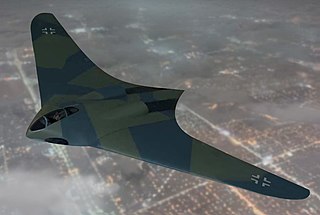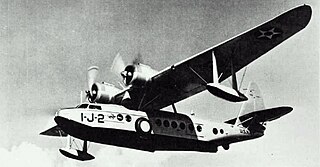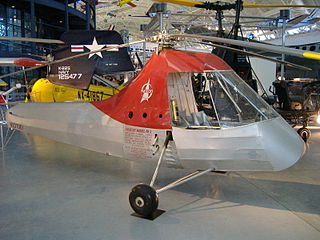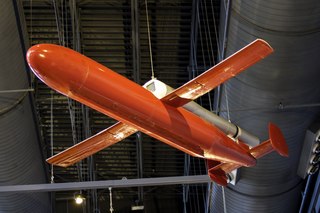| Airphibian | |
|---|---|
 | |
| Role | Roadable aircraft |
| Manufacturer | Continental Inc |
| Designer | Robert Edison Fulton, Jr. |
| Introduction | 1946 |
| Number built | 4 |
The Fulton FA-2 Airphibian was an American roadable aircraft manufactured in 1946.
| Airphibian | |
|---|---|
 | |
| Role | Roadable aircraft |
| Manufacturer | Continental Inc |
| Designer | Robert Edison Fulton, Jr. |
| Introduction | 1946 |
| Number built | 4 |
The Fulton FA-2 Airphibian was an American roadable aircraft manufactured in 1946.
Designed by Robert Edison Fulton Jr., it was an aluminum-bodied car, built with independent suspension, aircraft-sized wheels, and a six-cylinder 165 hp engine. The fabric wings were easily attached to the fuselage, converting the car into a plane. Four prototypes were built.
In December 1950, the Civil Aeronautics Administration (CAA) (later to become the FAA) certified one of the prototypes and gave it an 1A11 Aircraft Specification, N74104. [1] Lou Achitoff, was the CAA test pilot. [2] The N74154 is the aircraft that is today in the main building of the National Air and Space Museum in Washington, DC, having previously been on display in the Steven F. Udvar-Hazy Center.
The craft made its debut in November 1946 at Danbury, Connecticut. [3] Financial concerns forced Fulton to sell to a company that never developed it. [4]
The Airphibian took the approach of converting from an aircraft to a roadable vehicle by a conversion process that left aircraft sections behind during road use. The process consisted of removing a three-bladed propeller and placing it on a hook on the side of the fuselage, cranking down support casters, and disengaging lock levers connecting the flight unit to the road unit. The wing and aft fuselage are detached for road use. [5]
In the mid-1990s, one of the surviving Airphibians was restored by Fulton III, along with David Dumas and Deborah Hanson. Later, it was put on display for several years at the Canada Aviation Museum in Ottawa, Ontario, Canada in their main display hall, but in 2009 it moved to the Steven F. Udvar-Hazy Center (annex of the National Air and Space Museum). [6] Since 2022 it has been on display in the National Air and Space Museum in Washington, DC. [7]
Data from Jane's All The World's Aircraft 1951–52, [8] Smithsonian National Air and Space Museum [9]
General characteristics
Performance

The Horten H.IX, RLM designation Ho 229 was a German prototype fighter/bomber initially designed by Reimar and Walter Horten to be built by Gothaer Waggonfabrik late in World War II. It was the first flying wing to be powered by jet engines.

The Steven F. Udvar-Hazy Center, also called the Udvar-Hazy Center, is the Smithsonian National Air and Space Museum (NASM)'s annex at Washington Dulles International Airport in the Chantilly area of Fairfax County, Virginia. It holds numerous exhibits, including the Space Shuttle Discovery, the Enola Gay, and the Boeing 367-80, the prototype for the popular Boeing 707 airliner.

Aerocar International's Aerocar was an American roadable aircraft designed and built by Moulton Taylor in Longview, Washington in 1949. Although six examples were made, it never entered large-scale production. It is considered one of the first practical flying cars.

The Hiller YH-32 Hornet was an American ultralight helicopter built by Hiller Aircraft in the early 1950s. It was a small and unique design because it was powered by two Hiller 8RJ2B ramjet engines mounted on the rotor blade tips which weigh 13 lb (5.9 kg) each and deliver an equivalent of 45 hp (34 kW) for a total of 90 hp (67 kW). Versions of the HJ-1 Hornet were built for the United States Army and the United States Navy in the early 1950s.

The Boeing 367-80, known simply as the Dash 80, is an American quadjet prototype aircraft built by Boeing to demonstrate the advantages of jet propulsion for commercial aviation. It served as basis for the design of the KC-135 tanker and the 707 airliner.

The Sikorsky S-43 was a 1930s American twin-engine amphibious flying boat monoplane produced by Sikorsky Aircraft.

The Northrop N-1M, also known by the nickname "Jeep", is a retired American experimental aircraft used in the development of the flying wing concept by Northrop Aircraft during the 1940s.

The L-class blimps were training airships operated by the United States Navy during World War II. In the mid-1930s, the Goodyear Aircraft Company built a family of small non-rigid airships that the company used for advertising the Goodyear name. In 1937 the United States Navy awarded a contract for two different airships, K-class blimp designated K-2 and a smaller blimp based upon Goodyear's smaller commercial model airship used for advertising and passenger carrying. The smaller blimp was designated by the Navy as L-1. It was delivered in April 1938 and operated from the Navy's lighter-than-air facility at Lakehurst, New Jersey. In the meantime, the Navy ordered two more L-Class blimps, the L-2 and L-3, on September 25, 1940. These were delivered in 1941. L-2 was lost in a nighttime mid-air collision with the G-1 on June 8, 1942.

The Learjet 23 is an American six-to-eight-seat twinjet, high-speed business jet manufactured by Learjet. Introduced in 1964, it was Learjet's first model and created a new market for fast and efficient small business aircraft. Production ended in 1966 after 101 aircraft had been delivered.

The Piper PA-12 Super Cruiser is an American three-seat, high wing, single-engine conventional landing gear-equipped light aircraft that was produced by Piper Aircraft between 1946-48. The PA-12 was an upgraded and redesignated Piper J-5.

The Focke-Achgelis Fa 330 Bachstelze was a type of rotary-wing kite, known as a rotor kite. They were towed behind German U-boats during World War II to allow a lookout to see further.

The Paul E. Garber Preservation, Restoration, and Storage Facility, also known colloquially as "Silver Hill", is a storage and former conservation and restoration facility of the Smithsonian National Air and Space Museum, located in Suitland, Maryland, United States. Located adjacent to the Museum Support Center – a facility that serves the same purpose for other Smithsonian museums – the Paul E. Garber Facility was once the main artifact restoration facility of the National Air and Space Museum. The museum still stores aircraft and other artifacts at the Paul E. Garber Facility, but most storage and restoration functions have relocated to the Mary Baker Engen Restoration Hangar at the Steven F. Udvar-Hazy Center in Chantilly, Virginia. The facility is not open to the public.

The Piasecki PV-2 was a helicopter designed by Frank Piasecki. The PV-2 is best known for being one of the first successful helicopters flown in the United States. The PV-2 first flew on April 11, 1943. Developed as a technology demonstrator, the PV-2 brought several new features such as the first dynamically balanced rotor blades, a rigid tail rotor with a tension-torsion pitch change system, and a full cyclic and collective rotor pitch control.

The Mráz M.1 Sokol was a light aircraft built in Czechoslovakia in the years following the end of the Second World War. Designed in secret by Zdeněk Rublič at the Beneš-Mráz factory during the German occupation, the type was put into production in 1946.

The Monnett Moni is a sport aircraft developed in the United States in the early 1980s and marketed for homebuilding.
The Portsmouth Aerocar was a British light utility aircraft design of the late 1940s. It was intended to be an aircraft that could be used for a variety of tasks including transport "mobile office" but only one prototype was built being scrapped in 1950.

The McDonnell TD2D Katydid was a pulsejet-powered American target drone produced by McDonnell Aircraft that entered service with the United States Navy in 1942, and continued in use until the late 1940s.

The Globe KD5G is a pulsejet-powered American target drone produced by Globe Aircraft Corporation that began development in 1949. Due to changing requirements for drone performance, it was only operated by the United States Navy for a short period.

The Benoist Land Tractor Type XII was one of the first enclosed cockpit, tractor configuration aircraft built. Benoist used "Model XII" to several aircraft that shared the same basic engine and wing design, but differed in fuselage and control surfaces.

The Waterman Arrowbile was a tailless, two-seat, single-engine, pusher configuration roadable aircraft built in the US in the late 1930s. One of the first of its kind, it flew safely but generated little customer interest, and only five were produced.
{{cite web}}: CS1 maint: archived copy as title (link){{cite web}}: CS1 maint: archived copy as title (link)